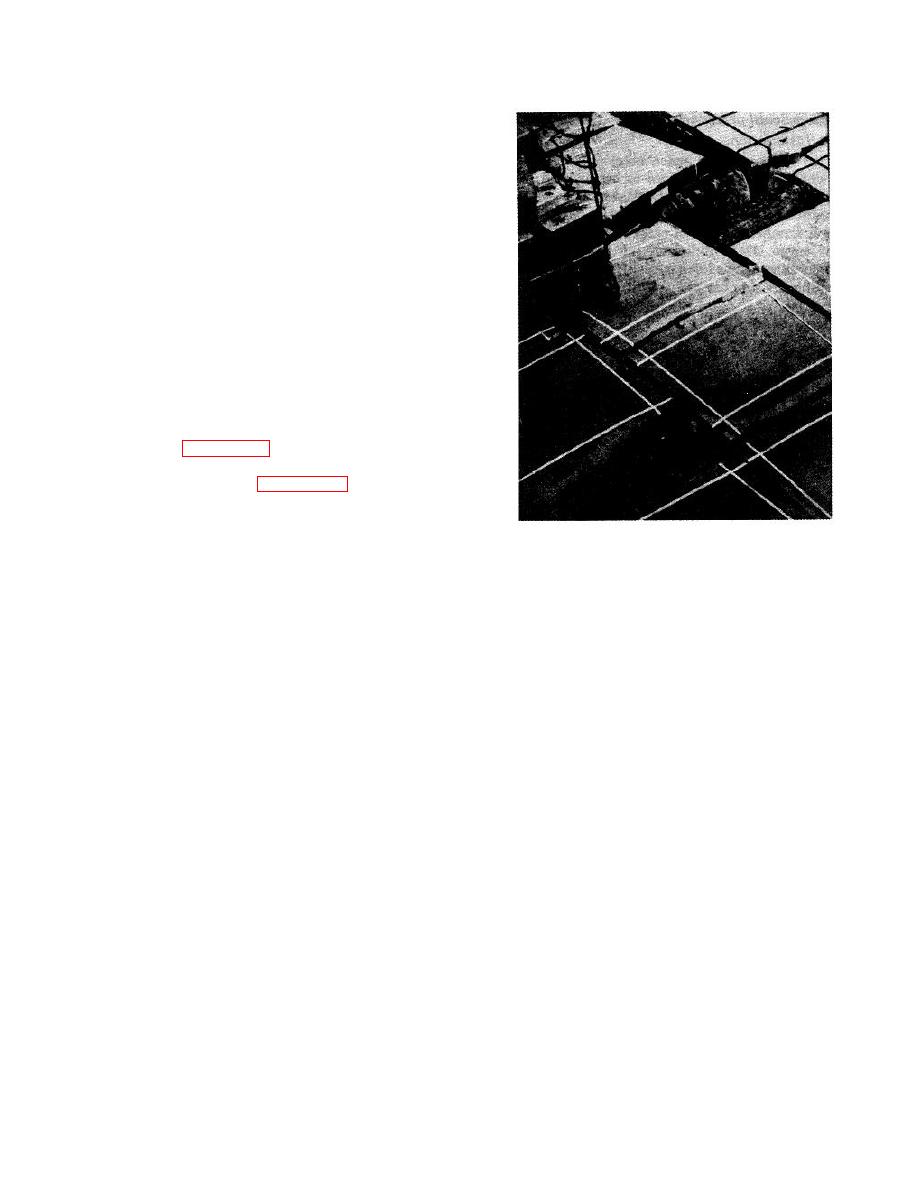 |
|||
|
|
|||
|
|
|||
| ||||||||||
|
|
 TM 38-400/NAVSUP PUB 572/AFMAN 23-210 MCO 4450.14/DLAM 4145.12
unrestrained, insufficiently restrained, or overly inflated
unit will tend to assume a round shape and will transfer
excessive pressure to a limited area of the cargo facing.
When inflating disposable pneumatic dunnage, inflate
the unit slowly until the bag has filled out; rapid inflation
has a tendency to crystallize the polyethylene liner
opposite the inflator valve.
(d) Measure the resultant void.
If
excessive void is present, deflate units. (This deflation
process is more suitable for reusable units as disposal
units do not provide rapid deflation using valve fixture.)
Reposition cargo, if practicable, or insert additional
dunnage units in the void. When dunnage units are
correctly installed, they must be deflated to the normal
shipping PSI, usually 2 to 5 pounds (three-quarters PSI
max inflation in truck trailers/containers) depending on
cargo characteristics. As mentioned above, deflation
process is slow with disposable units so excessive
pressures should not be built up.
pattern in the use of disposable or reusable pneumatic
dunnage units. Observe that figure 3-53, depicting a
marine carrier application, shows multiple dunnage units
positioned side-by-side for void filling. In this area of
use (marine), this procedure has proven acceptable,
Figure 3-53. Variable sized voids occupied by
notwithstanding the comments in f(2) above.
dunnage units in storage.
(2) Removal.
(a) Cut or otherwise puncture the
disposable pneumatic dunnage units at any desirable
location on the bag and remove from conveyance.
(b) Deflate the reusable pneumatic
dunnage units by releasing the valve. Make sure that
deflation of unit(s) will not permit any unsupported cargo
to fall or shift to an unsafe position. Upon removing the
unit from conveyance, roll up toward the valve end to
force the exit of any remaining air. This should be done
immediately upon removal and the valve components
retightened to prevent valve damage or entry of foreign
material.
Units removed at destination should be
marked for inspection and repair, as appropriate.
Dunnage units should be placed in a protected storage
area if not to be immediately returned to shipper. See
b(l) above on return of units. Keep buffer boards for
further use, if practicable, upon removal from carriers.
h. Care and handling of pneumatic dunnage units.
(1) Reusable pneumatic dunnage units
should be stored in areas that are relatively cool and not
exposed to excessive sunlight. A convenient means of
storing the units is to lay them out on pallets equipped
with superstructures so as to avoid excessive
superimposed weight. Normally, not more than 25 units
3-84
|
|
Privacy Statement - Press Release - Copyright Information. - Contact Us |